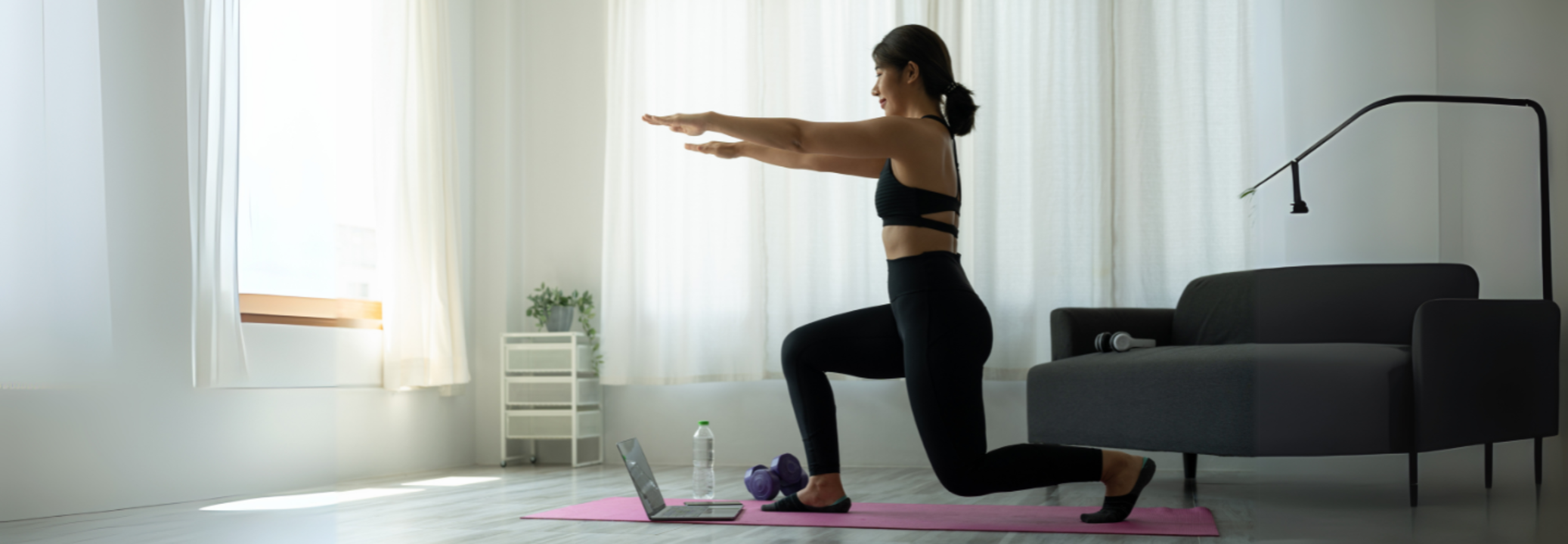Six Pilates Moves That Will Reduce Joint Pain While Walking

Credits: Canva
Walking is the most convenient exercise around—it's low-impact, no cost, and has immense benefits to our health, ranging from the improvement of cardiovascular health to aiding weight control and stress relief. Yet, for many of us, walking can also be a pain. If you feel joint discomfort, muscle soreness, or overall stiffness after or even during a walk, then it's time to look beneath the surface.
Wincing when walking usually corresponds with the absence of mobility or strength in the important areas such as hips, knees, ankles, and core. That is where Pilates, a low-impact, holistic conditioning technique, comes into play. Pilates not only enhances strength, mobility, and balance but also teaches the body to move effectively, saving it from injury and pain.
Pilates is an excellent exercise for strengthening the legs and increasing joint mobility, particularly for people with lower body pain. Pilates also enhances deep core activation, which stabilizes posture and walking mechanics.
If you're inactive, rehabbing from an injury, or just want to make walking easier, these six Pilates exercises for beginners can help you develop strength and flexibility, starting from the ground up.
1. Deep Squat
The deep squat is a basic movement that engages the hips, knees, and ankles—three big joints of walking.
How to Do It:
Stand feet wider than hip-width apart. Slowly descend into a squat, keeping heels on the ground if possible (it's okay if they do lift). Use a support such as a chair or banister for stability. Rock side to side gently while in the position.
Why It Helps:
This move improves hip mobility and ankle flexibility, two areas that directly affect stride length and shock absorption during walking. Poor hip function often causes compensatory pain in the knees or lower back.
2. Calf Raises
Ankle instability or weak calves can reduce the push-off strength in each step, making walking less efficient and more painful.
How to Do It:
Stand facing a wall, placing your fingertips on it for balance. Rise up onto your toes, pause for a second, and then lower slowly. Once you’re comfortable, try doing the movement one leg at a time.
Why It Helps:
This strengthens the calves and ankle stabilizers, enhancing your gait and supporting the knee joint above. Strong calves also reduce strain on the plantar fascia, which can prevent foot pain.
3. Leg Swings
This exercise is commonly applied as a dynamic warm-up. It addresses tight hip flexors and is beneficial for fluid movement.
How to Do It:
Stand to one side of a wall, holding onto it for balance. Swing the outside leg back and forth in a loose motion. Allow your pelvis to rotate naturally with the swing.
Why It Helps:
Releasing tension in the hips facilitates better range of motion when walking. Tight hip flexors are a frequent source of back and knee pain.
4. Hip Stretch
Following a walk, stretching your hip flexors and quads can avoid stiffness and pain from developing.
How to Do It:
Kneel on your left leg with the right foot in front. Tuck your pelvis forward slightly and lean forward slowly. Hold the stretch, and then reverse sides.
Why It Helps:
This exercise reverses the repetitive action of walking by stretching out the hip flexors and reducing strain on the lower back.
5. Seated Glute Stretch
Sitting can lead to tightening of the glutes, affecting walking mechanics.
How to Do It:
Sit in a chair, cross your right ankle over your left knee. Hinge forward at the hips, keeping your back straight, until you feel a stretch in the right glute. Repeat on the opposite side.
Why It Helps:
Tight glutes and piriformis muscles can cause sciatica-like symptoms. Stretching them prevents nerve compression and encourages pelvic alignment.
6. Thread the Needle
Don't forget the spine—particularly the thoracic (upper back) section, which is responsible for arm swing and stability when walking.
How to Do It:
Start on all fours. Pass your right arm across under your left arm, turning until your shoulder is on the mat. Release and reach that arm up toward the ceiling. Repeat on the other side.
Why It Helps:
It relaxes the shoulders and mid-back, reversing tightness from bad posture and supporting whole-body coordination.
Why Making Joint-Friendly Movement Is Important?
Joint pain, no matter its cause, can significantly change your way of moving—and even prevent you from moving altogether. Pilates provides a gentle, systematic means of restoring mobility without causing more stress.
As we get older, it becomes essential to learn to control breathing and stabilize our core while we move. Pilates addresses both. Pilates makes us move with awareness, which decreases pain and increases confidence. Still debating if doing six exercises is worth being able to walk better?
A 2023 paper published in GeroScience emphasizes walking as a highly potent anti-aging intervention. Studies have shown that walking daily lessens the risk of chronic disease, enhances mental health, and even improves sleep quality. Walking without pain is walking farther—and reaping all the rewards that go along with it.
Tips To Ease Joint Pain
If joint pain lasts more than general stiffness, talk to a physical therapist or rheumatologist. Long-term pain is associated with underlying conditions such as rheumatoid arthritis or osteoarthritis. Meanwhile, minor lifestyle changes can assist:
- Moist heat or cold packs for places such as the jaw and neck
- Wrist and elbow splints or pillows for support
- Finger and hand exercises to preserve dexterity
- Hip bridges or knee stretches for persistent lower-body tightness
